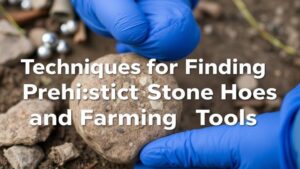Interpreting River and Stream Curves on Maps for Treasure Hints
Interpreting River and Stream Curves on Maps for Treasure Hints
Understanding the curves of rivers and streams on maps is an invaluable skill for treasure hunters and archaeologists alike. Maps serve as historical records that can reveal the locations of long-lost treasures. The interpretation of river and stream curves can lead treasure hunters to significant finds by providing clues about geological and historical formations. This article delves deep into the significance of these curves, how to interpret them, and their practical applications in treasure hunting.
The Significance of River and Stream Curves
Rivers and streams are not just simple channels of water; they are dynamic systems shaped by numerous natural forces. The curves and bends of these waterways tell us about the geological and historical background of an area. For treasure hunters, these features can highlight regions where artifacts, lost settlements, or concealed treasures may be hiding.
One critical aspect of river curves is their ability to indicate the deposition and erosion patterns that have occurred over time. For example, meanders–wide curves in a river–often correspond to areas of sediment deposition, which can contain valuable artifacts as erosion uncovers buried items. Understanding these dynamics allows treasure hunters to prioritize areas for exploration.
Types of River Curves and Their Implications
There are various types of curves found in rivers and streams, each signifying different geological processes and potential locations for treasure. Here are some of the most noteworthy types:
- Meanders: These gentle curves in a river are critical indicators for treasure location. Due to sediment accumulation, meanders often become sites where treasures from past civilizations may be buried. A classic example can be found in the meandering Mississippi River, where extensive archaeological studies have uncovered ancient settlements.
- Oxbow Lakes: Formed when a river meanders so much that it eventually cuts off a bend, these lakes can be treasure troves of historical artifacts as they may collect debris from upstream. For example, many Native American tools have been discovered around oxbow lakes.
- River Braiding: A condition where a river splits into smaller channels, braiding indicates high sediment transport and can show where treasure hunters might find materials washed down from surrounding hills or mountains. coiling Snake River showcases such braided features.
Mapping Techniques for Interpretation
Effective interpretation of river curves requires familiarity with various mapping techniques that professionals employ. Here are some essential mapping approaches:
- Topographic Maps: These maps illustrate elevation and landforms, enabling clear visibility of ridges, valleys, and curves of rivers. Understanding elevation through topographic representation can direct treasure hunters to potentially less-explored higher grounds near rivers.
- Satellite Imagery: High-resolution imagery from satellites allows treasure hunters to visualize broader landscapes and trace river paths. For example, Google Earth provides excellent tools for examining the flow of a river and identifying subtle changes in its course.
Analyzing Historical Maps
Historical maps can provide insights on former river courses that have changed over time. Analyzing these maps can help treasure hunters locate previous settlement areas or significant points of interest.
For example, maps from the 1800s may show rivers winding through areas that are now dry land due to land reclamation or shifting water tables. By examining these historical routes, treasure hunters can identify locations that may still hold undiscovered treasures.
Practical Applications of River Curve Interpretation
Interpreting river and stream curves has direct applications for treasure hunting. Here are some practical ways to utilize this knowledge:
- Site Selection: By using maps to identify historical meanders and sediment-rich areas, treasure hunters can target specific sites for excavation, thereby increasing their chances for significant finds.
- Artifact Recovery: Knowing where erosion or sediment deposition occurs can guide searches for buried artifacts that have been uncovered by natural processes. For example, along rivers that flood periodically, previously covered items can become exposed.
Potential Challenges in Interpretation
While interpreting river curves can provide treasure hunting opportunities, certain challenges can complicate the process. For example:
- Navigational Difficulties: Dense vegetation or fast-moving water can obscure river curves, making map interpretation less effective in the field.
- Geological Changes: Rivers can be altered significantly through human intervention, such as damming or rerouting, which may mislead hunters relying solely on maps.
Conclusion and Actionable Takeaways
Interpreting river and stream curves is a crucial skill for those interested in treasure hunting. By examining the geographical and historical significance of these waterways, hunters can enhance their chances of finding artifacts and treasures. Understanding the types of curves, implementing effective mapping techniques, and addressing potential challenges will provide a comprehensive approach to successful treasure hunts.
As a key takeaway, river and stream curve interpretation should be integrated into any treasure hunting expedition. By remaining rigorous in your research and observant of the clues nature presents, your prospects for discovery are likely to improve significantly.



